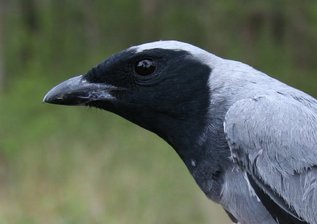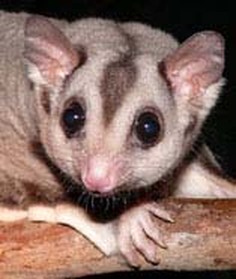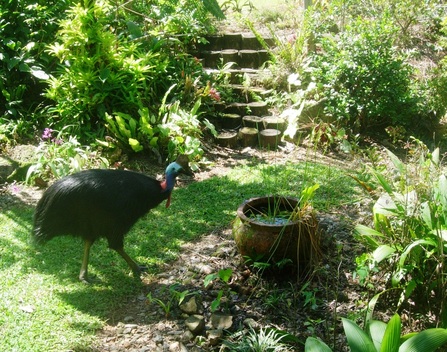While all birds are welcomed in the Wildwatch patch of forest, it was particularly exciting the other day to hear the calls of black-faced cuckoo shrikes. That they were a pair was soon evident as both flew to the same branch where they sat side by side. These were the first black-faced cuckoo shrikes we had seen since the cyclone.

Eagle, as we called him, from his habit when he was learning to fly of soaring to the top of the tallest piece of furniture in the room and gazing down upon us, confirmed for us the valuable lesson all animal lovers know – that every wild creature, like each human, has its own character, and contact with humans brings this out.
We found him on the ground as a tiny oily-looking, spiky nestling on the morning after a huge storm. There was no question of leaving him for his parents to find. The enormous tree was broken and in any case, he was almost featherless. We fed him lean mince with added calcium (this was long before excellent specialised bird food was available from vets) and as he grew found ourselves catching insects for him, causing many askance glances as we dived on grasshoppers and moths along the street!
After the frightening experience of being caught on a barbed wire fence during another storm soon after he first flew outdoors, he opted to sleep inside, coming in through a window we left open for him, and would often vie in the evening with the tiny bats catching insects around the dining room light.
Eagle was three when we lost him. He had flown to neighbours who fed him at breakfast time and one day their cat caught him. Our friends rescued him but did not realise he was so badly hurt. Injured, he must have crawled the mile across paddocks home.
We took him to the vet who treated him but admitted he did not hold out much hope, and when we got him home gently put him in his usual sleeping place. In the morning he was dead.
Eagle still retains a huge place in our hearts and when we hear that characteristic bubbling cry we always think of that bright little bird who, in an inimitable way, gave us so much pleasure.
Black faced cuckoo shrikes can be found in most Australian woodlands. They are grey feathered and streamlined with a black face. The nestlings are also grey and have a characteristic flat-looking head. Another country name is blue jay.
They are useful birds, being insect eaters, and nifty flyers, combining flying and gliding.
Both sexes incubate the eggs and feed the young.
They still need the same care but their roots will be well established by spring’s growth spurt.
Young trees are best planted with a little organic fertiliser in the bottom of the hole. This should be covered with a layer of soil to prevent root burn but will be well received by the time the roots grow down to it. Water trees in well and mulch around them, not letting the mulch touch the stem as this may cause stem rot. Young trees should be watered regularly until it is obvious they are established.

We have received many phone calls and personal queries asking about trees and plants suitable for cassowaries and mahogany gliders, since both these creatures are endangered. Especially after Yasi, when so many trees were damaged, replanting food trees and, if possible, making corridors or reconnections between treed areas would give these embattled species a huge boost.
Butterflies and nectar feeding birds use a wide variety of flowering plants, both native and exotic, and please don’t forget frogs and lizards which both need cool, damp, shady places so would appreciate tropical leaf plantings.

A cassowary visited this lovely Tully garden from the forest behind and enjoyed a drink at the ornamental pond. Living in the ridge forest, the cassowary was recently filmed to be part of a documentary featuring Tim Flannery and Brian Doyle.

